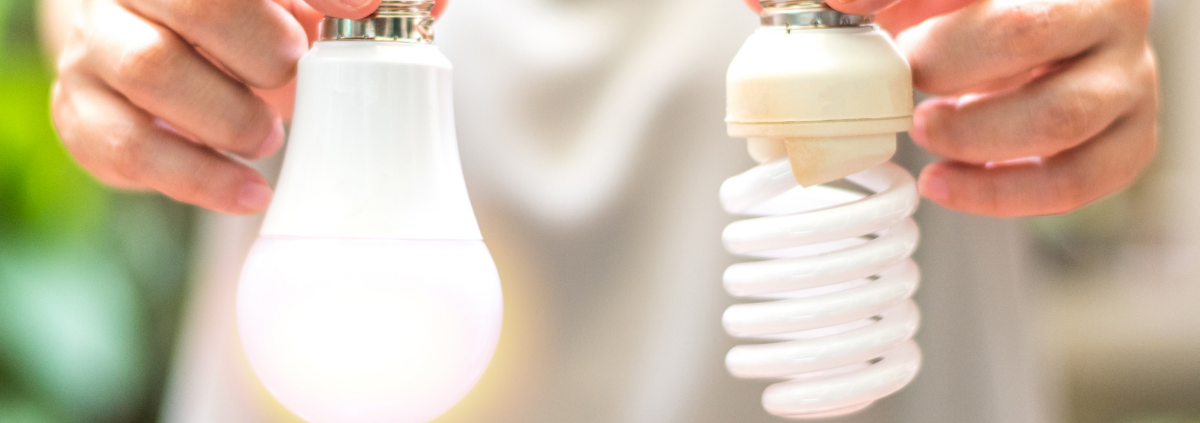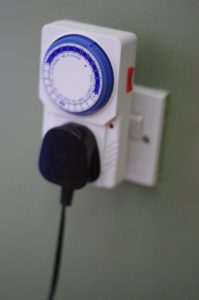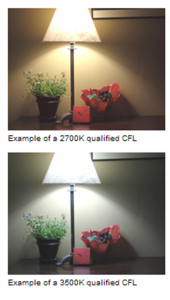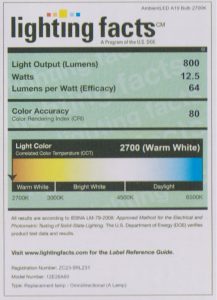 Canva Pro
Canva ProEnergy Efficient Lighting Toolkit
Lighting is one of the easiest, most cost-effective ways to save energy. If you’d like a better explanation of any of the common lighting terms used in this toolkit, see our list of common lighting terms .
The first thing to consider is whether you’re happy with your current lighting levels, energy costs, and energy usage. If you are not happy with any or all of these, then that should be your focus in choosing a new bulb or fixture.
Be sure to pay attention to color temperature and color rendering, too. These are important factors that can make a great difference in the success your retrofit.
Don’t Forget Occupancy Sensors, Photocells, and Timers
These sensors can reduce energy use by 30% or more. A timer set to have an outdoor light on four hours per night, rather than eight, can reduce energy costs by half, or even more in northern climates during the winter.

First, determine what type of lights you have in your area and the amount of energy they use. This list of common lighting types can help you, if you don’t have a replacement bulb or fixture to determine this information.
To determine how much energy your lights use, first determine the watts required to power the fixture. Then determine the amount of time, in hours, the fixture is powered per year, to determine the kilowatt-hours per year. You can also determine kilowatt-hours per month, day, or any other measurement of time. Just be sure to compare this usage consistently when comparing fixtures. If your fixture has a ballast, don’t forget the wattage used by the ballast. Then determine the lumens, or amount of light, produced. The amount of lumens per square foot is known as a foot-candle, which is a common measurement used in lighting design to describe the amount of light that actually lands on a surface.
You can determine the efficacy of the light by dividing the wattage by the lumens. Efficacy is important in lighting because it shows how many lumens a light produces for each watt it uses. The greater the efficacy, the more efficient the lamp.
This Standard Wattage Table with Lumens is a list of common wattages for common bulbs and fixtures. A kilowatt is equal to 1,000 watts.
The first way to save energy is to pick a bulb or fixture with a lower wattage than your current bulb. In an LED conversion, you can typically reduce your wattage by 25% to 50% and retain your current light levels.
If you need more light in an area, you should replace the current bulb with a bulb that produces more lumens than your current bulb.
You can still reduce your energy use and costs while increasing your lumens, if you pick a bulb with higher efficacy.
Also, be sure to clean the fixture. This can go a long way toward producing and maintaining a higher light output and you often don’t realize it until after you clean out the fixture.
How to Know What Level of Light You Need
The Illuminating Engineering Society publishes standard illuminance levels. See the quick the NCAT reference guide for recommended light levels (in foot-candles) in different applications:
NCAT Interpretation of IES Standards
 Color Temperature and Color Rendering are Very Important Considerations
Color Temperature and Color Rendering are Very Important Considerations
The color rendering index, also called CRI, is a measure of how accurately the light reproduces the color of the objects it illuminates. The scale ranges from 0 to 100, with 100 being the best. This photograph shows examples of color rendering and the light types associated with that CRI. Metal halide, for example, offers much better color rendering than high pressure sodium. Most LEDs have high CRI values as well. The CRI of a bulb can usually be located on the label of the bulb box or in the manufacturer’s cut sheet materials.
The color temperature of a bulb is given in degrees Kelvin. An incandescent lamp has a color temperature of about 2,700 degrees Kelvin, as shown in the photo, above right. LED and fluorescent lamps are available in a range of color temperatures. Preferred color temperature can be a matter of taste, but most residential applications are closer to the 2,700 degree value and outdoor applications range from 3,000 to 4,500.
Before changing out an entire area, you should test one bulb or a section of bulbs, to make sure you are happy with the color temperature.
How to Put it All Together When You Choose a New Bulb or Fixture
 A typical light bulb label for an LED is show at right. The label lists the lumens that the bulb will produce, watts used by the bulb, efficacy, color rendering index, and color temperature.
A typical light bulb label for an LED is show at right. The label lists the lumens that the bulb will produce, watts used by the bulb, efficacy, color rendering index, and color temperature.
If you are replacing a bulb or fixture and are happy with your current light levels, you can look for a bulb that produces a similar amount of lumens to the one you currently have.
If you want more light than your current bulb, increase the lumens; for less light, decrease the lumens.
The wattage of the bulb indicates the power draw of the bulb, and the efficacy indicates how many lumens per watt the bulb produces. This is especially helpful when you are comparing bulbs. The higher the efficacy, the more energy-efficient the bulb.
Lighting Cost Comparison
| Lamp Type | Total Watts | Lamp Cost | Annual Energy Cost
(Dusk-Dawn) |
Total Cost @ 1 year | Total Cost @ 2 years | Total Cost @ 3 years |
| 400-Watt Metal Halide | 458 | $40 | $160.48 | $200.48 | $360.96 | $521.44 |
| 130-Watt LED | 130 | $200 | $32.48 | $232.48 | $264.96 | $297.44 |
| SAVINGS | 328 | $128 | -$32 | $96 | $224 |
*Assumes energy cost of $0.08/kWh and dusk to dawn is 4,380 hours/year
Other Common Outdoor Lighting Retrofits
| Existing Light | Replacement Light | Watts Saved |
| 400-Watt Metal Halide | 130-Watt LED | 328 |
| 1,000-Watt High Pressure Sodium | 300-Watt LED | 800 |
| 100-Watt Metal Halide | 46-Watt LED | 82 |
| 250-Watt Wall Pack | 60-Watt LED Wall Pack | 235 |
| 32-Watt T8, 4-foot length | 15-Watt, 4 foot LED | 15 |
| 40-Watt T12, 4-foot length | 15-Watt, 4 foot LED | 42 |
| 60-Watt Incandescent | 9-Watt LED | 51 |
| 60-Watt Incandescent | 15-Watt CFL | 45 |
